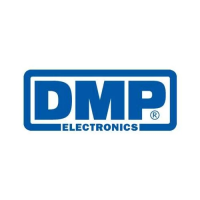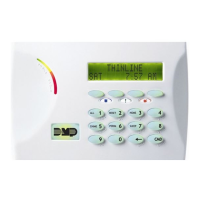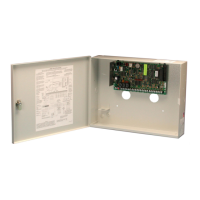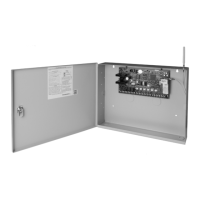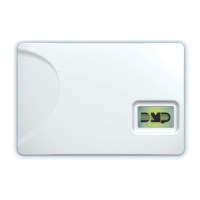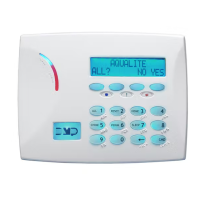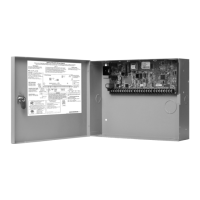Digital Monitoring Products XR500 Series Installation Guide
20
INSTALLATION
16.3 Serial Connector LEDs
The two LEDs, located near the bottom-right corner of J21 indicate data transmission and receipt. The top LED
ashes green to indicate the panel is transmitting serial data. The bottom LED ashes yellow to indicate the panel is
receiving serial data.
J1 Ethernet Connector (XR500N/XR500E only)
17.1 Description
The J1 Ethernet Connector is available on the XR500N/XR500E Network version to connect directly to an Ethernet
network using a standard patch cable. The maximum impedance is 100 Ohms.
17.2 Ethernet LEDs
The two LEDs, located to the left of J1 Ethernet Connector, indicate network
connection. The top, Link LED lights up green to indicate a valid receive
connection from the host network. The bottom, Activity LED ashes yellow to
indicate messages are being sent and received.
J3 Telephone RJ Connector
18.1 Description
Connect the panel to the public telephone network by installing a DMP 356 RJ Cable between the panel J3 connector
and the RJ31X or RJ38X phone block. The maximum impedance is 100 Ohms. CAUTION - To reduce the risk of re,
use only No. 26 AWG or larger telecommunication line cord, such as DMP Model 356 Series Phone Cords.
18.2 J10 893A Connector
Connect an 893A Dual Phone Line Module to J10 on the XR500 Series. Refer to the 893A Installation Sheet (LT-0135)
for complete information.
18.3 Notication
The user must not repair registered terminal equipment. In case of trouble, immediately unplug the device from the
telephone jack. The factory warranty provides for repairs. Registered terminal equipment may not be used on party
lines or in connection with coin telephones. No tify the telephone company with the following information:
a. The particular line(s) where the service is connected
b. The FCC registration number as listed in Section 18.5
c. The ringer equivalence
d. The device make, model, and serial number
18.4 Phone Line Monitor
The XR500 Series panel has a built-in telephone monitor that monitors the phone line voltage to verify the
connection to the central oce. Figure 11 and the table below identify the phone block pin layout, wire numbers,
and colors.
Wire Number Wire Color
1 Gray
2 Orange
3 Black
4 Red
5 Green
6 Yellow
7 Blue
8 Brown
The wires on the RJ31 that feed pins 4 and 5 should be the ONLY wires on the D-marc. All other house phone wiring
should be tied to pins 1 and 8 coming back from the RJ31.
Dial tone must come into RJ31X on pins 4 and 5 and go back to house phones from pins 1 and 8. Follow these steps
to determine if panel is seizing the line:
1. Unplug phone cord from RJ31X
2. Place butt-set on pins 4 and 5
3. Listen for dial tone. With dial tone present, lift either wire from pins 1 or 8
4. Listen for dial tone again. If the dial tone is present, RJ31X wiring is correct. If no dial tone is present, the
RJ31X wiring is backwards. Rewire so dial tone is coming IN on 4 and 5.If you still have trouble with the phone
line, you may need to replace the RJ cord. If the dial tone is still not present, swap out the RJ31X phone block.
Figure 10: J1 Header and LEDs
J1
ETHERNET
Link LED
Activity LED
To Telephone
Line
RJ31X or RJ38X
Phone Block
8
7
6
54
3
2
1
Ring Tip
To Premise
Phone
Ring 1
Tip 1
Figure 11: Phone Jack Wiring
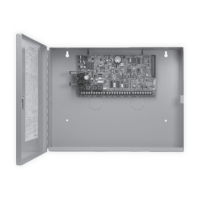
